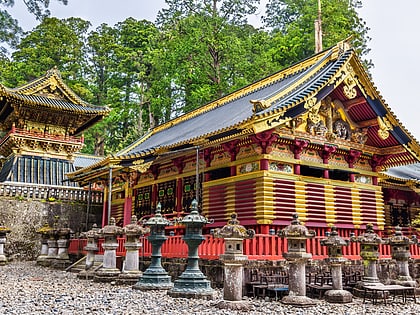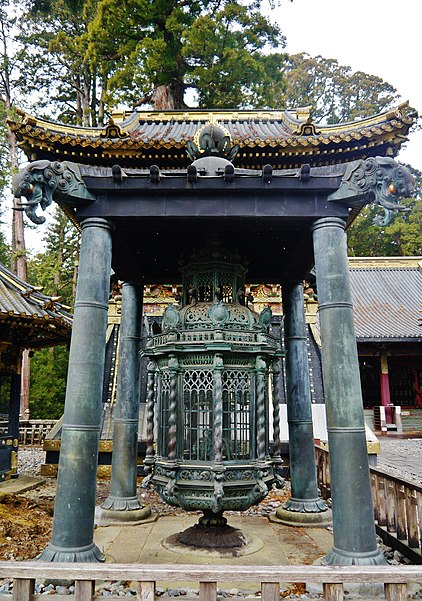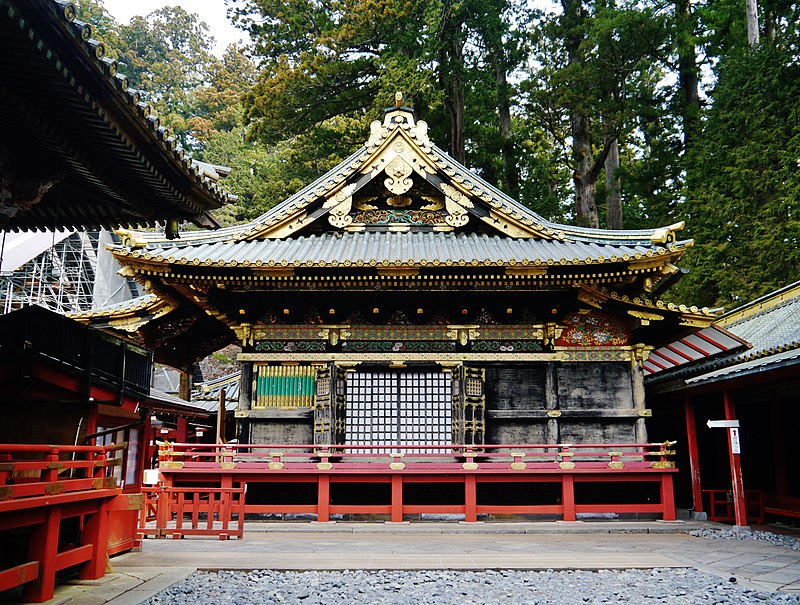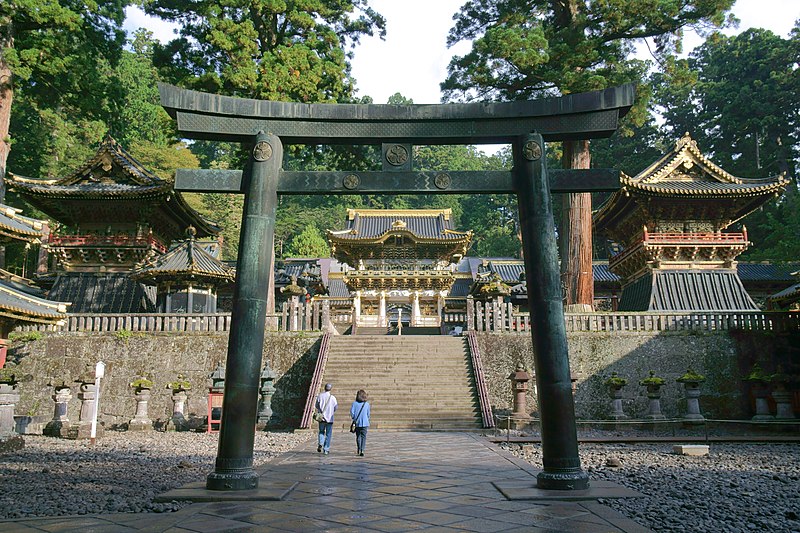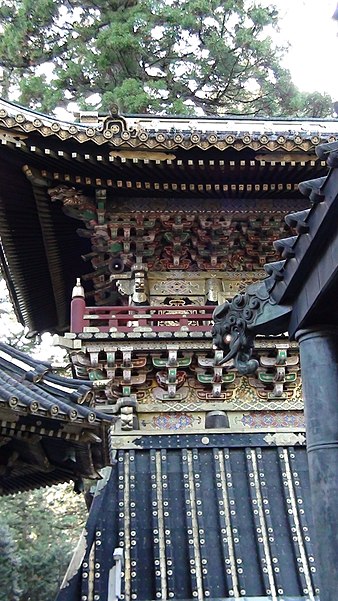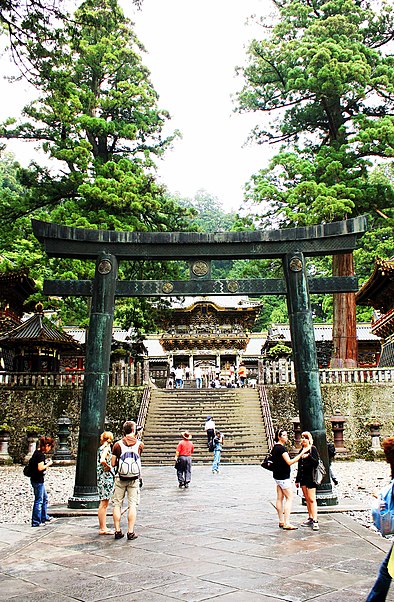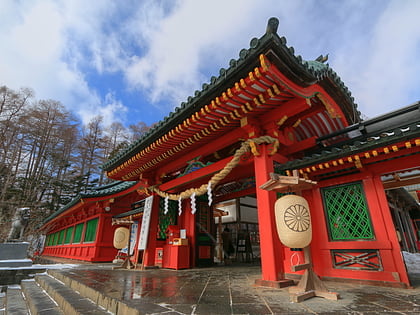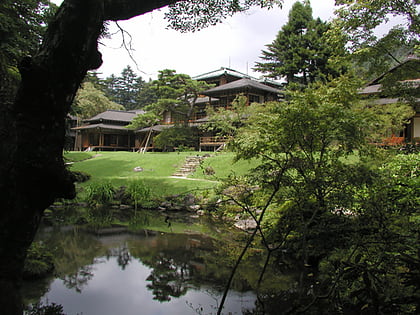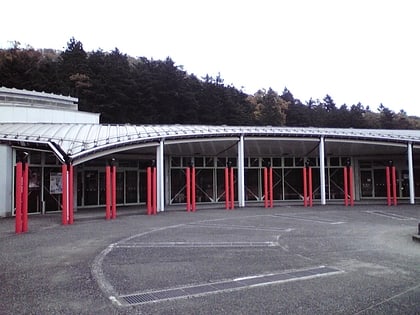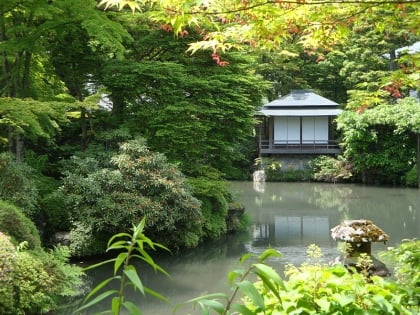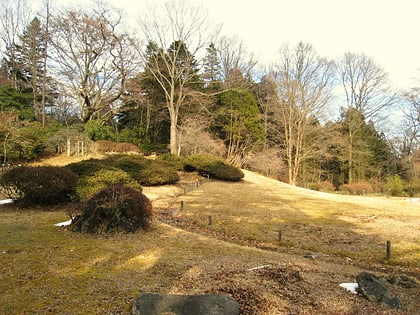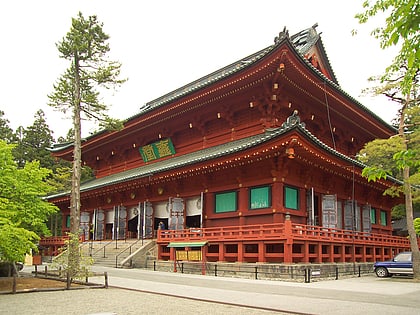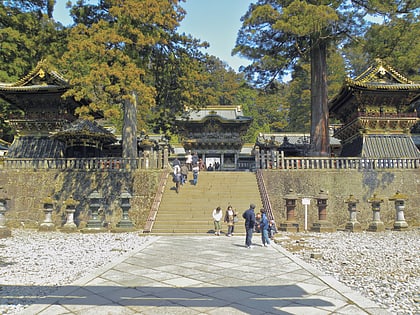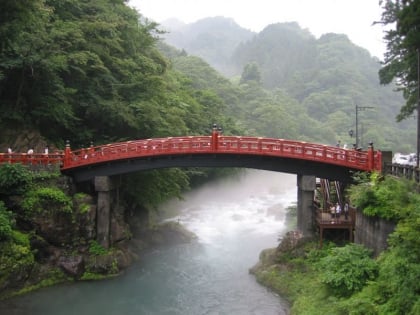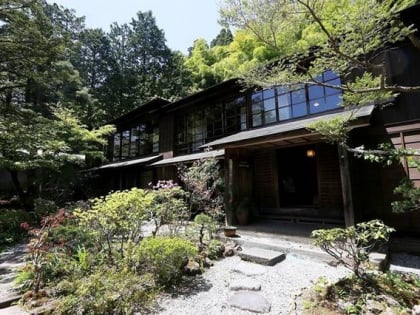Nikkō Tōshō-gū, Nikkō
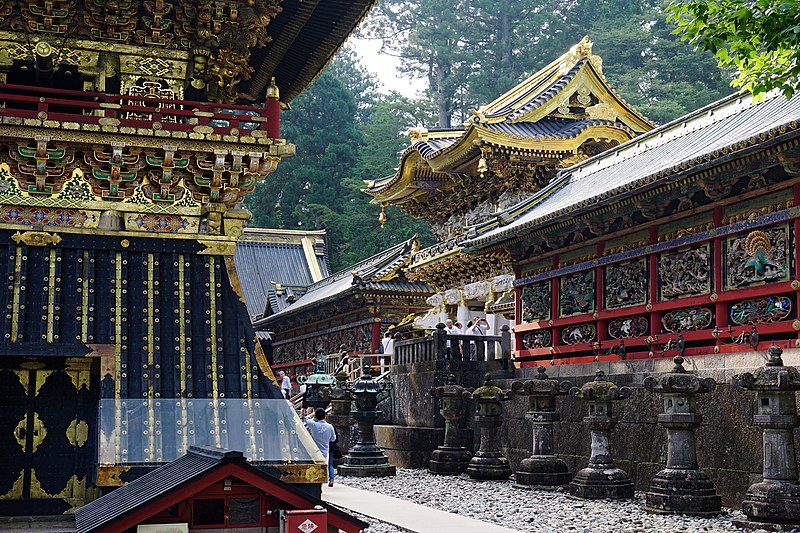
Facts and practical information
Nikkō Tōshō-gū is a resplendent Shinto shrine nestled in the verdant forests of Nikkō, Japan, a city that harmoniously blends natural beauty with historical significance. This shrine, which is part of the "Shrines and Temples of Nikkō," a UNESCO World Heritage site, is dedicated to Tokugawa Ieyasu, the founder of the Tokugawa shogunate that ruled Japan for over 250 years.
Constructed in 1617, this shrine is a masterpiece of Japanese craftsmanship, boasting a lavish design that stands in contrast to the traditional Shinto preference for simplicity. It is renowned for its intricate wood carvings, vibrant colors, and elaborate gold leaf decorations that adorn the various buildings within the complex. Among its most famous carvings is the "Three Wise Monkeys," which embody the proverbial principle "see no evil, hear no evil, speak no evil."
Visitors to Nikkō Tōshō-gū will be greeted by the imposing Yomeimon Gate, a structure so detailed and elaborate that it is sometimes referred to as "higurashi-no-mon," meaning the gate you could look at until dusk. The shrine's five-story pagoda is another highlight, with each story representing an element – earth, water, fire, wind, and sky – in perfect harmony.
The expansive grounds of the shrine offer a rich tapestry of cultural heritage and natural scenery. The pathway to the shrine is lined with stone lanterns and towering cedar trees, creating a serene atmosphere that transports visitors back in time. The sacred bridge, Shinkyo, which arches gracefully over the Daiya River, marks the entrance to the sacred area and is considered one of the most picturesque spots in Nikkō.
Nikkō Tōshō-gū is not only a feast for the eyes but also a place of deep spiritual importance. It is the final resting place of Tokugawa Ieyasu, and his mausoleum, reached by ascending a flight of stone steps, is a place of pilgrimage and reflection.
For the average tourist, Nikkō Tōshō-gū is a must-see destination that offers a rich blend of art, history, and spirituality. It is advisable to allocate a full day to explore the shrine and its surroundings thoroughly. Comfortable walking shoes are recommended due to the hilly terrain and the amount of walking required. The shrine is open to visitors throughout the year, with varying hours depending on the season, and there is an admission fee to enter the complex.
Nikkō Tōshō-gū – popular in the area (distance from the attraction)
Nearby attractions include: Futarasan jinja, Tamozawa Imperial Villa, Nikkō Kirifuri Ice Arena, Shōyō-en.
Frequently Asked Questions (FAQ)
When is Nikkō Tōshō-gū open?
- Monday 8 am - 5 pm
- Tuesday 8 am - 5 pm
- Wednesday 8 am - 5 pm
- Thursday 8 am - 5 pm
- Friday 8 am - 5 pm
- Saturday 8 am - 5 pm
- Sunday 8 am - 5 pm
Which popular attractions are close to Nikkō Tōshō-gū?
How to get to Nikkō Tōshō-gū by public transport?
Bus
- Taiyuin/Futarasan Shrine • Lines: W (4 min walk)
- Hotel Seikōen-mae • Lines: W (6 min walk)
Train
- Tobu-Nikko (34 min walk)
